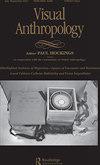框架中的传统
IF 0.3
Q3 ANTHROPOLOGY
引用次数: 1
摘要
高大而骄傲的斯法基安穿着黑衬衫和皮靴,蓄着胡子的脸面对着白山,骄傲的他体现了希腊人的男子气概。康斯坦丁诺斯·卡兰齐斯在他的第一部专著中探讨了当克里特人的男子气概体现传统时会发生什么。这本书将斯卡基式的男子气概表现作为希腊传统的中心代表。在此过程中,它揭示了斯法基亚地区——一个反抗威尼斯和奥斯曼帝国统治者的起义和二战期间德国占领下的藏身之处——以及斯法基亚人如何成为克里特岛本土主义、抵抗和本土希腊人的国家象征。通过丰富的民族志仔细记录,这部作品描绘了一幅迷人的肖像,展示了传统如何嵌套在显示过去本身的图像中。Kalantzis的主要论点可以概括如下:传统的框架——当地的刻板印象被“中心统治其外围”——是一个共同想象异国情调的地方(这里是在斯卡基亚人、希腊城市居民和外国游客之间)。看看斯法基亚粗犷男子气概的视觉表现,本土主义的框架——实际上是照片的框架——揭示了传统和冲突的版本。这本书的结构是一幅三联画,第一部分探索了崎岖的、几乎像月球一样的白山(克里特岛西部)景观,斯卡基人的刻板印象,以及这个神话在希腊民族国家中展开的国家背景。第二部分着重于权力和想象力。这一部分揭示了克里特岛传统男子气概的视觉和政治经济——主要是通过商业摄影和代表这些男人的风景明信片的镜头,但也通过艺术品、电影、路标和服装。它展示了这些表征是如何嵌入个人和国家领域的。在最后一部分,Kalantzis讨论了现代性对传统的威胁和紧张。本次讨论探讨了视觉“蒙太奇”,其中现代元素和实物威胁着斯卡基传统的纯粹版本。这本书的结尾考虑了旅游业和财政紧缩对传统的侵蚀,威胁着传统的存在。在这里,时间性是关键,因为传统是一种移动的力量,只有在特定的历史背景下才能理解。框架传统的悖论来自于Kalantzis对非常复杂的民族志材料的精辟的理论化。有这样的概念本文章由计算机程序翻译,如有差异,请以英文原文为准。
Tradition in the Frame
Tall and proud, his black shirt and leather boots on, his bearded face turned toward the White Mountains, the proud Sfakian embodies fierce Greek masculinity. What happens when Cretan manhood embodies tradition is what Konstantinos Kalantzis explores in his first monograph. The book presents Sfakian performance of manhood as a central representation of Greek tradition. In doing so it unveils the region of Sfakia—a hiding place during the uprising against the Venetian and Ottoman rulers and under the German Occupation during World War II—and how Sfakian men stand as national symbols of Cretan nativism, resistance, and indigenous Greekness. Carefully documented through a rich ethnography, this work paints a fascinating portrait of how tradition is nested in images that manifest the past itself. Kalantzis’ overarching argument could be summarized as follows: The frame of tradition—where local stereotypes are imposed by the “centers to dominate their peripheries” —is a terrain where exoticism is co-imagined (here between Sfakians, Greek urbanites, and foreign tourists). Looking at visual representations of Sfakian rugged manhood the frame of nativism—and that indeed of photographs— reveals tradition and conflicted versions of the same. The book is structured as a triptych with the first part exploring the rugged, almost lunar landscape of the White Mountains (in western Crete), the Sfakian stereotype, and the national context in which this myth unfolds within the Greek nation-state. The second part focuses on power and imagination. This section unpacks the visual and political economies of traditional masculinity in Crete—notably through the lens of commercial photography and picturepostcards representing these men, but also through artworks, films, road signs, and clothing. It shows how these representations are embedded both in the personal and national spheres. In the last part, Kalantzis discusses the threats and tensions that modernity poses to tradition. This discussion examines visual “montages” where modern elements and material objects threaten an unadulterated version of Sfakian tradition. The book ends with considerations on tourism and austerity as forces feeding on tradition, threatening its very existence. Here temporality is key, since tradition is a moving force that can only be understood in particular historical contexts. The paradoxes of framing tradition come out of Kalantzis’ masterful theorization of very sophisticated ethnographic material. With concepts such as
求助全文
通过发布文献求助,成功后即可免费获取论文全文。
去求助
来源期刊

Visual Anthropology
ANTHROPOLOGY-
CiteScore
1.00
自引率
50.00%
发文量
19
期刊介绍:
Visual Anthropology is a scholarly journal presenting original articles, commentary, discussions, film reviews, and book reviews on anthropological and ethnographic topics. The journal focuses on the study of human behavior through visual means. Experts in the field also examine visual symbolic forms from a cultural-historical framework and provide a cross-cultural study of art and artifacts. Visual Anthropology also promotes the study, use, and production of anthropological and ethnographic films, videos, and photographs for research and teaching.
 求助内容:
求助内容: 应助结果提醒方式:
应助结果提醒方式:


